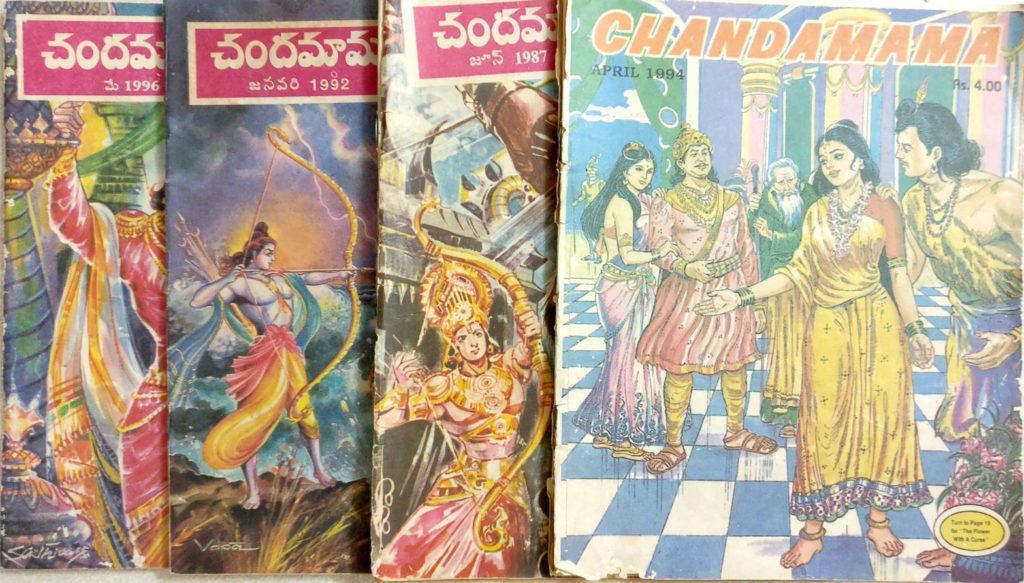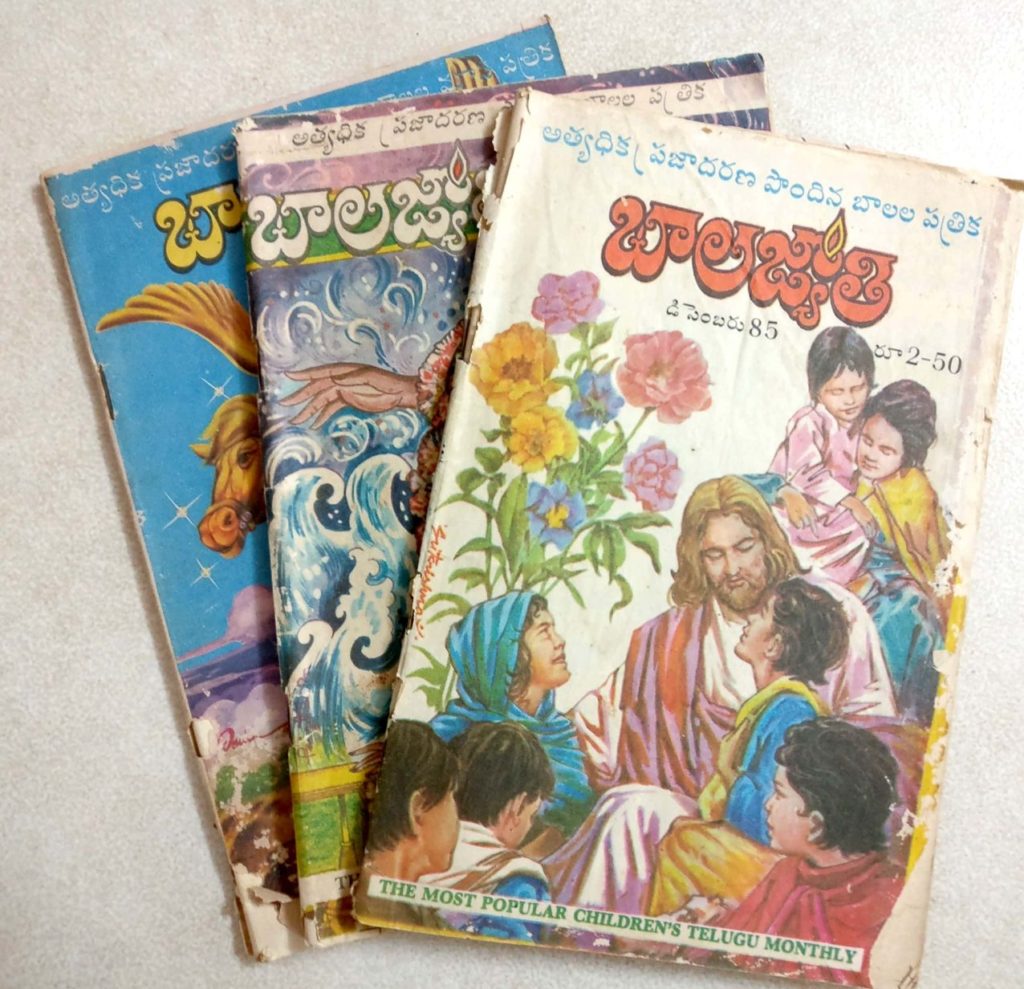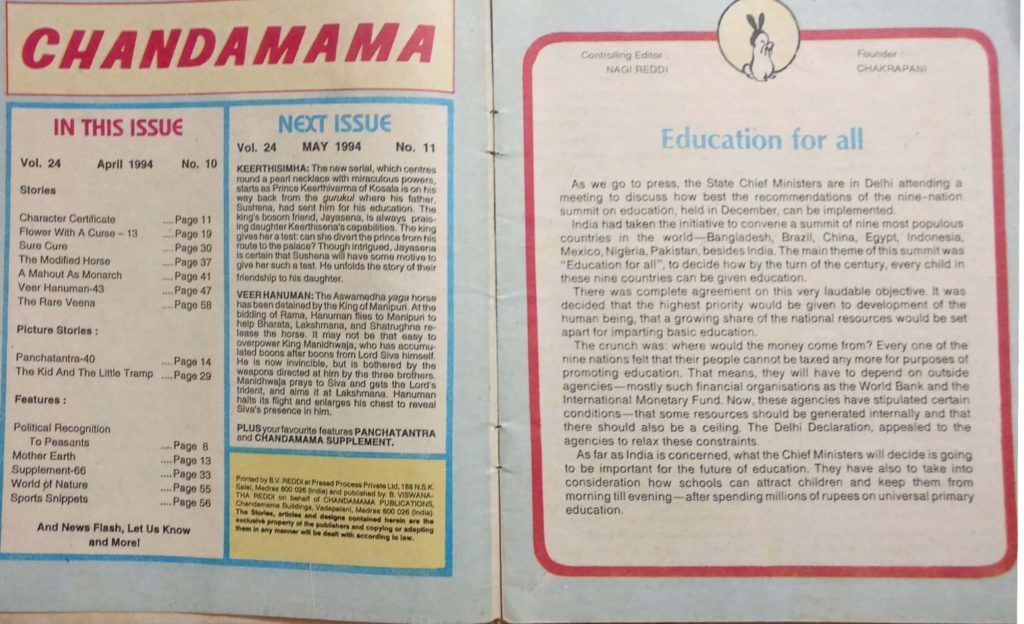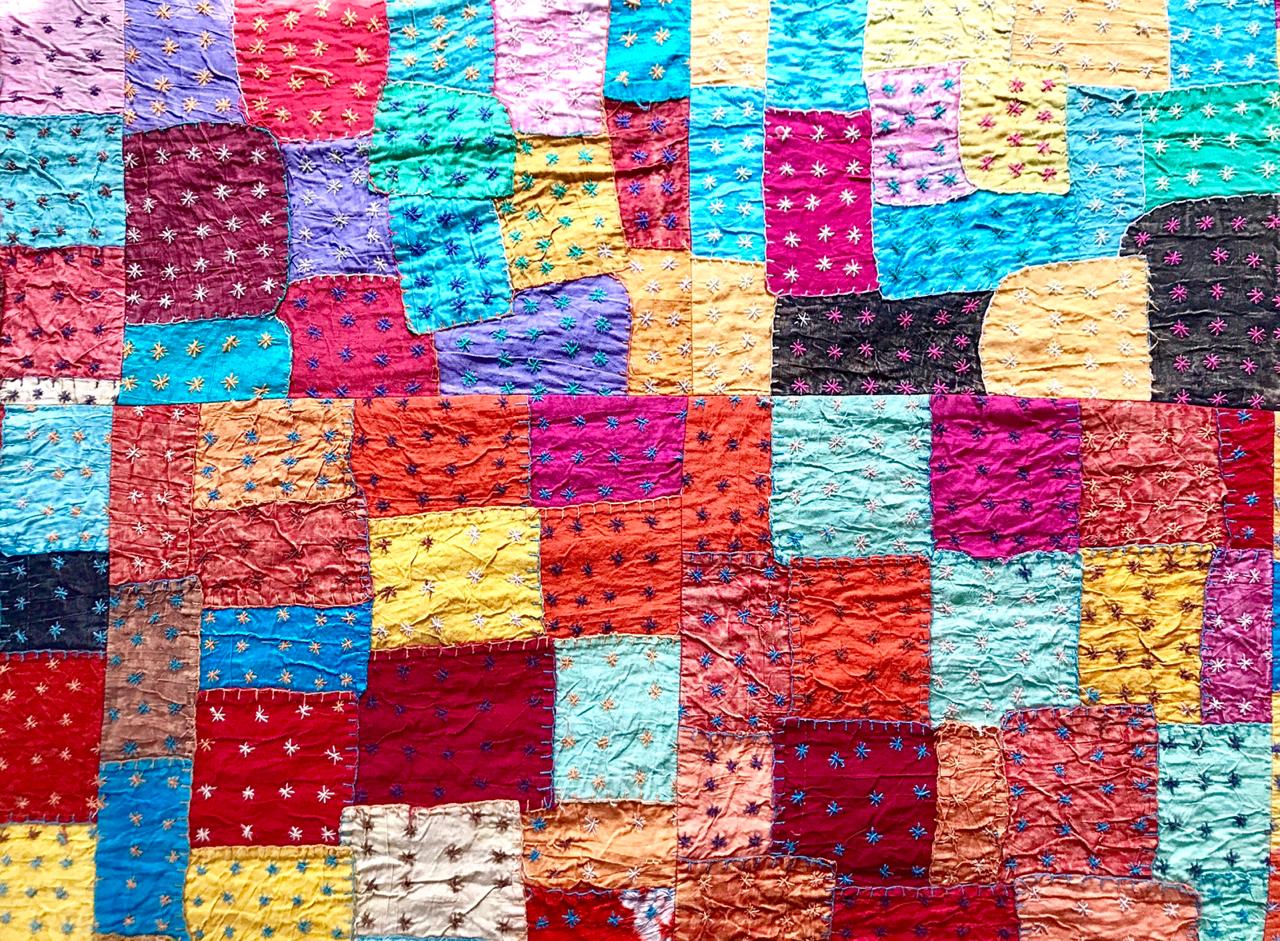My father is a voracious reader and collected thousands of books from Jiddu Krishna Murthy to Dennis the Menace, Winston Churchill to Ken Follet and owned an entire cupboard of the Reader’s Digest magazines right from 1960s. Unable to keep track of so many books, he has recently gifted the extended family many of them, donated boxes of books to a good neighbourhood library, kept a few favourites for his himself and parcelled the rest to my sister and me. Excited and happy, as I opened the cartons surveying the books carefully, out popped several bound copies of our most favourite magazine from our school and college days, the Chandamāma.
If you were in school in Andhra Pradesh in the 1980s or before and have never heard of Chandamāma, then you were probably not somebody who cared for reading much. It was a monthly children’s magazine started in 1947 by the popular director/producer and screenplay writer duo from Telugu filmdom, B. Nagi Reddy and Chakrapani. Chandamāma quickly became popular with children and adults alike and eventually the magazine was published in English and 13 Indian languages. Each issue brought out stories with simple morals and life truths that were woven around simple folk. Mythological stories, parables, folklore, fairy tales abound in each issue all of which made a lasting impression on generations of Telugu readers. Surprisingly, though most of the stories were set in rural backdrop, many who lived in towns and cities like us could read, enjoy and relate to them. The magazine which ran for 60 years apparently was published till 2008, with many changes made for the contemporary reader and society. What remains today are the kindle version of digital copies right from the first issue in 1947. I am now the proud owner of copies from the 1980s and 90s but with a few missing.

Growing up in the 1980s in Vijayawada, (an important commercial city from South Indian state of Andhra Pradesh), Chandamāma was so much part of our lives. Our pocket money every month was invariably spent on Chandamāma, and another popular Telugu children’s magazine called Bāla Jyoti. Our frequent visits to my maternal grandparent’s village, Godavarru, on the banks of river Krishna, formed a strong foundation for my love for bucolic life. Chandamāma had practically been a huge part of our formative years and influential in our learning process. Each story, written in simple Telugu, was both entertaining and educational. While the writing style was didactic, the themes of the narratives were never dogmatic and preachy. Virtues like honesty, charity, discipline, hard work, humility were all taught through simple characters. So in the story Kodi Khareedu (The Price of the Hen), when the village smith Perayya was cheated of his money by the landlord of the village Kotayya, in the end the latter was made to realise his mistake and was punished severely for his greed (July 1983). Amulyamaina Aasthi (Priceless Possession) is about Saambu, a poor village goatherd and flutist who was given a job in the court of King Vikramasena as the keeper of the Treasury. In the wake of rumours of the King’s favouritism towards Saambu, the courtiers blame him for fraud and deceit. Saambu proves to the court that his flute and his ragged outfit are far more precious and priceless than material wealth. Young readers were gently taught that greed, jealously, indolence, deceit will not only make their life miserable and unhappy, but will also not make them successful. The magazine also published folklore and stories from other countries like the Armenian folklore “Bangaaru gulaabeelu” (The Golden Roses). The story is about two honest farmers who were gifted with a rose plant with golden flowers. The plant disappears every time the greedy Prince wanted to pluck its flowers. The story ends with the moral that we should not covet what others possess and earned through hard work (November, 1983).

The magazine also carried fantasy serials like Mugguru Maantrikulu (The Three Sorcerers) and Betaala Kathalu which was adapted from the famous ‘Betaal Pacchisi’ written nearly 2,500 years ago by Somdev Bhatt.
The Telugu writer and revolutionary, Kodavatiganti Kutumbarao, popularly known as Ko Ku, edited the magazine for 28 years (1952-1980). Neither the writers nor the editors ever advocated any caste, class, religious, racial or gender discrimination. The mythological stories were written and edited by Kutumbarao in a style which was easy for children to understand.

The popularity of the magazine also came from its colourful illustrations which attracted the young minds to reading and learning. Each issue came with unique and vivid cover design and the tales captivated the readers with their life-like pictures making the characters and settings come alive. Famous artists like M. T. V. Acharya, Vaddadi Papiah (Vapa), Kesava Rao (Kesava), M. Gokhale, T. Veera Raghavan (Chithra) and several others were associated with these memorable illustrations.
Holding these copies of old Chandamāmas in my hand, I felt really glad that we were prudent enough to save a few of these gems for posterity. Flipping the pages, I almost felt I heard a few voices from the book talking to me and I quickly got engrossed in the stories, reconnecting back with my long-lost companions.
